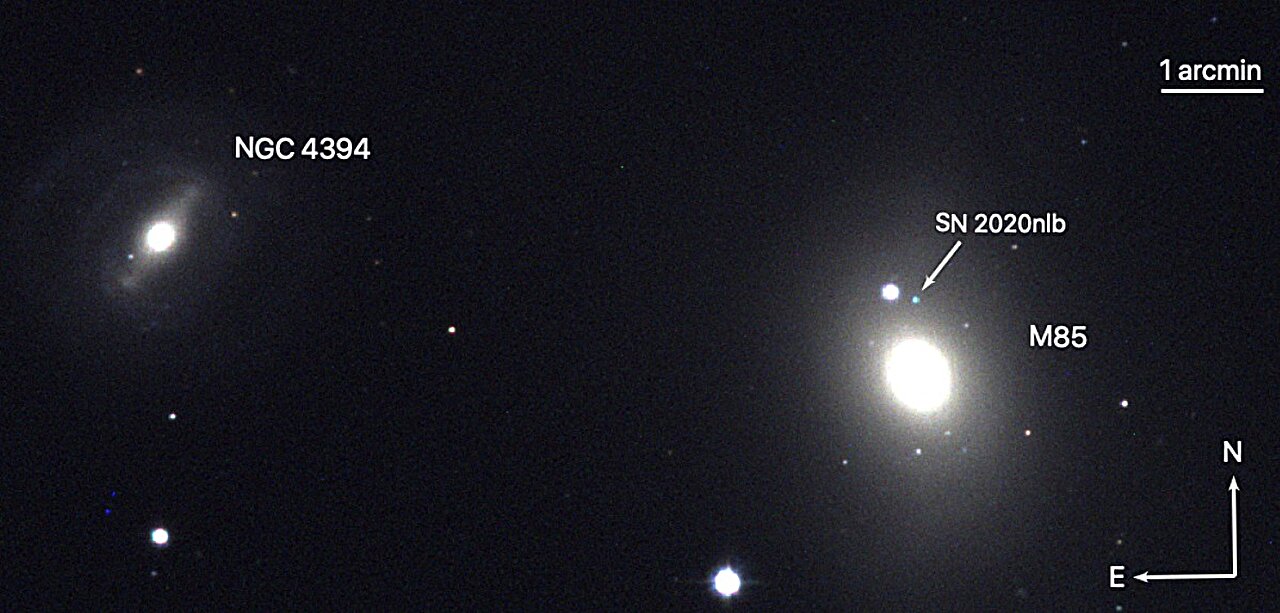Astronomers are investigating a supernova flare, studying its spectral parameters and comparing it with other similar objects. These studies can help to understand the evolution of such astronomical objects.

Supernova SN 2020nlb
Using various ground-based telescopes, astronomers conducted photometric and spectroscopic observations of a nearby Type Ia supernova known as SN 2020nlb. Such objects are formed in binary systems in which one of the stars is a white dwarf. Stellar explosions of this type are important to the scientific community because they provide significant clues about the evolution of stars and galaxies.
SN 2020nlb was discovered on June 25, 2020, with the Asteroid Terrestrial-impact Last Alert System (ATLAS) shortly after the explosion in the lenticular galaxy Messier 85 (or M85), located about 60 million light-years away. Spectroscopic observations of SN 2020nlb, which began shortly after its discovery, confirmed that it is a Type Ia supernova.
Observations, mainly using the Liverpool Telescope (LT) and the Northern Optical Telescope (NOT), have provided a lot of data on the properties of this supernova.
Flare’s characteristics
Photometric and spectroscopic observations conducted by Williams’ team (the author of the study) lasted almost 600 days after the explosion of SN 2020nlb. It was estimated that the supernova was discovered only two days after its first flare.
Observations showed that the brightness of SN 2020nlb decreased by 1.28m in the B-band during the first 15 days after the maximum brightness. Consequently, it faded faster than the average for these objects. This indicates that it has a lower brightness than usually happens in such cases.
Spectral class of a supernova
The spectrum of SN 2020nlb, taken almost three days after the first flare, shows strong features of ionized metals. Moreover, the spectrum of the nebula, taken 594 days after the maximum brightness, shows that the strong line of iron radiation disappeared, and the ionization balance of the emission fell.
The very first spectra of SN 2020nlb resembled those that we saw at the maximum brightness of SN 1991bg and similar supernovae. Subsequently, the emission lines of the supernova evolved, became hotter, and became more similar to SN 2011fe when it became brighter to its maximum.
According to the authors of the article, the nebular spectrum of SN 2020nlb, compared with other similar spectra of SNe Ia, indicated a possible trend when SNES that were brighter at their peak had higher ionization in the nebulous phase. This may indicate that SN 2020nlb and similar supernovae are fundamentally different from the bulk of the normal Ia supernova population.
According to phys.org
Follow us on Twitter to get the most interesting space news in time
https://twitter.com/ust_magazine


